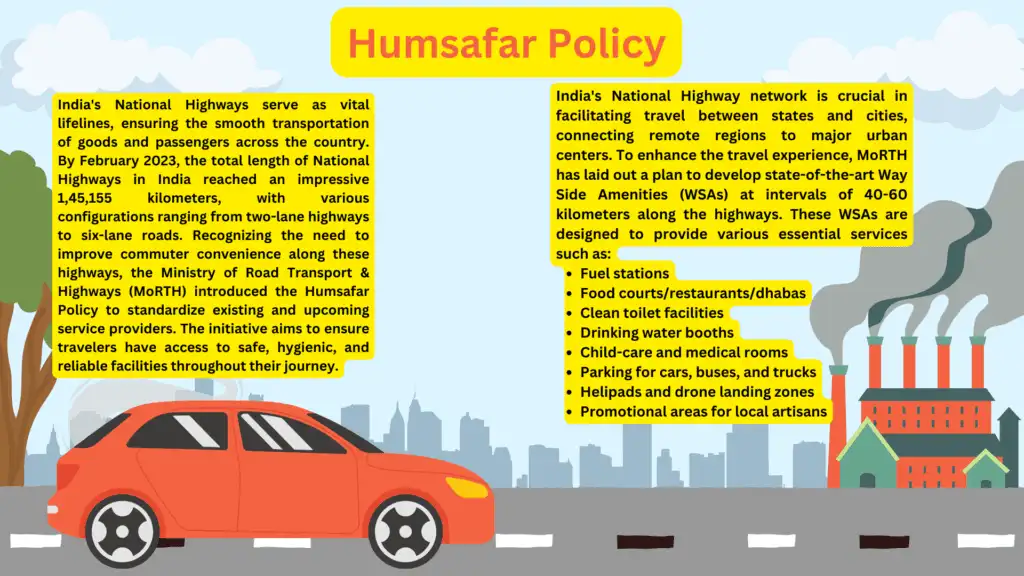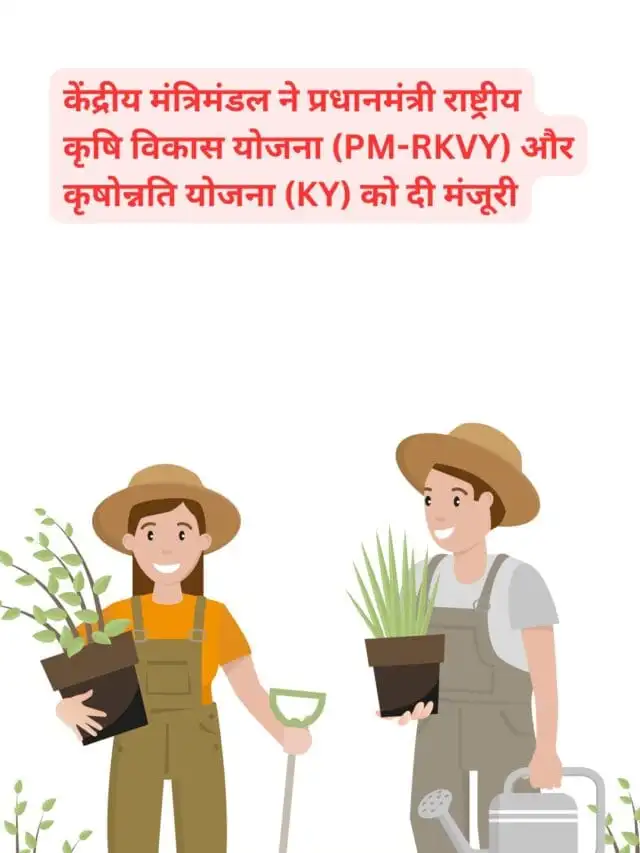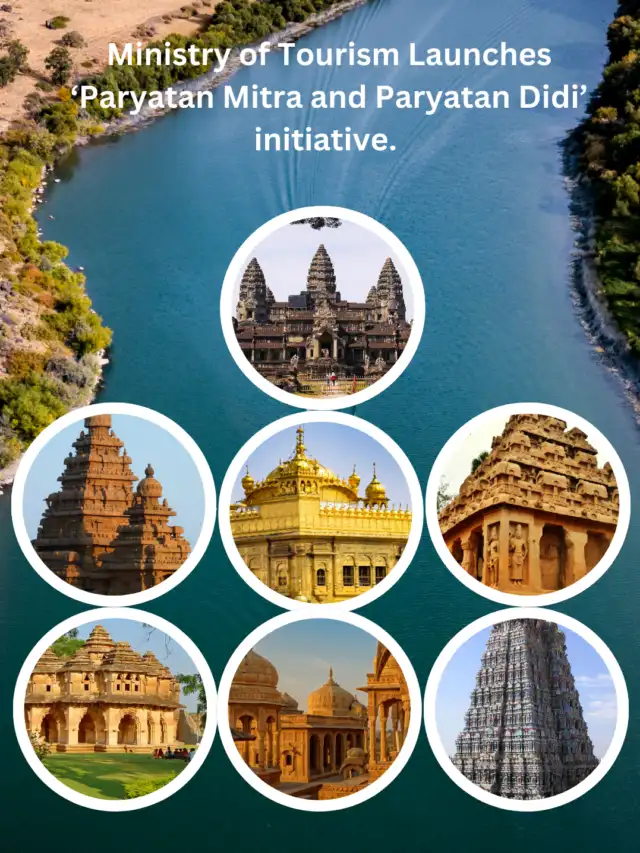
What is Humsafar Policy?
India’s National Highways serve as vital lifelines, ensuring the smooth transportation of goods and passengers across the country. By February 2023, the total length of National Highways in India reached an impressive 1,45,155 kilometers, with various configurations ranging from two-lane highways to six-lane roads. Recognizing the need to improve commuter convenience along these highways, the Ministry of Road Transport & Highways (MoRTH) introduced the Humsafar Policy to standardize existing and upcoming service providers. The initiative aims to ensure travelers have access to safe, hygienic, and reliable facilities throughout their journey.
1. Background and purpose of the Humsafar Policy
India’s National Highway network is crucial in facilitating travel between states and cities, connecting remote regions to major urban centers. To enhance the travel experience, MoRTH has laid out a plan to develop state-of-the-art Way Side Amenities (WSAs) at intervals of 40-60 kilometers along the highways. These WSAs are designed to provide various essential services such as:
- Fuel stations
- Food courts/restaurants/dhabas
- Clean toilet facilities
- Drinking water booths
- Child-care and medical rooms
- Parking for cars, buses, and trucks
- Helipads and drone landing zones
- Promotional areas for local artisans
With over 950 WSA sites planned primarily on high-speed corridors and four-lane National Highways, the ministry seeks to improve the comfort, safety, and convenience for highway travelers.
However, the problem lies with the existing service providers, such as roadside dhabas and petrol stations, which lack standardization. Many of these services are not regularly monitored, leading to inconsistent quality and hygiene levels. The Humsafar Policy aims to bring these service providers under one umbrella, ensuring a uniform standard of service across the country.
2. Objectives of the Humsafar Policy
The Humsafar Policy has been designed to onboard existing and upcoming service providers along National Highways, aiming to:
- Standardize services: This includes providing hygienic, safe, and well-maintained facilities for travelers.
- Increase convenience: Travelers can use the Rajmarg Yatra app to locate nearby facilities and access detailed information about services available at each stop.
- Improve monitoring: The policy introduces regular monitoring of service quality and infrastructure to ensure high standards are maintained.
By onboarding service providers, the policy seeks to create a structured system that offers benefits not only to travelers but also to service providers and highway authorities.
3. Key benefits of the Humsafar Policy
A. Benefits to service providers:
- Standardized Facilities: Service providers will be required to maintain high-quality, hygienic amenities that comply with MoRTH guidelines, improving their service offering.
- Digital and On-Site Visibility: Registered service providers will be featured on the Rajmarg Yatra app, increasing their visibility to travelers. Additionally, they will have permission to put up signage along the National Highways, further enhancing their on-site visibility.
- Cost Savings: Registered service providers will benefit from a waiver of fees for renewal of existing access permissions, provided they maintain a minimum rating of 3 stars.
- NHAI Branding: The National Highways Authority of India (NHAI) branding on service provider establishments will boost their credibility, as NHAI is a trusted government body.
- Customer Feedback Mechanism: Commuters can rate services and facilities on the Rajmarg Yatra app, helping service providers improve based on real-time feedback. Providers will also have access to customer ratings, allowing them to address any issues promptly.
B. Benefits to NHAI/MoRTH:
- Reliability: The policy ensures that high-quality, standardized services will be available at regular intervals, even on highways with fewer lanes where fewer WSAs may be constructed.
- Improved Monitoring: NHAI will have the ability to monitor the performance of service providers using real-time data from the feedback system and conduct regular inspections to ensure compliance.
C. Benefits to commuters:
- Enhanced Travel Experience: Commuters will enjoy access to well-maintained and hygienic facilities at regular intervals during their journey.
- Information and Ratings: Travelers can use the Rajmarg Yatra app to instantly find nearby services, check user ratings, and provide feedback on the services they use.
- Empowerment: Commuters will have the power to raise issues and rate the services provided, ensuring accountability from service providers.
4. Eligible service providers and categories
The Humsafar Policy covers four key categories of service providers, each with specific requirements to ensure quality service:
- Eateries (Restaurants, Food Courts, Dhabas):
- Must have licenses like FSSAI certification, health/trade licenses, and fire safety clearances.
- Minimum area and infrastructure requirements must be met, including accessible toilets, baby care rooms, and Divyangjan-friendly facilities.
- Fuel Stations:
- Required to meet fire safety standards and offer basic amenities such as toilets and baby care rooms.
- Must also have accessible parking for buses, cars, and trucks.
- Trauma Centers:
- Must be registered under the Clinical Establishment Act and comply with healthcare standards.
- They should offer emergency medical services, including first aid and child-care rooms.
- Convenience Stores:
- Required to maintain cleanliness, provide essential products for travelers, and offer facilities such as well-lit parking areas.
5. Process of onboarding and registration
To join the Humsafar Policy, service providers must apply through the Humsafar portal or app. The process involves the following steps:
- Document Submission: Service providers submit necessary documents, including licenses and infrastructure details.
- Verification: A third-party agency will scrutinize the documents and conduct field inspections to ensure compliance with the policy’s requirements.
- Digital Registration: Upon successful verification, the service provider will receive a digital registration certificate, valid for two years.
- Renewal: Service providers must apply for renewal of registration at least 30 days before expiration. Continuous monitoring and feedback from commuters will play a role in determining whether the registration is renewed.
6. Feedback and monitoring mechanisms
To ensure compliance and maintain high service standards, the Humsafar Policy includes a robust feedback and monitoring system:
- Digital Public Feedback System: Service providers must install a feedback system at their facilities, allowing commuters to rate their experience on-site.
- Rajmarg Yatra App Feedback: Travelers can provide more detailed feedback and rate facilities on the app based on cleanliness, service quality, parking, food variety, and more.
- Inspection and Monitoring: Third-party agencies will regularly inspect service providers, with more frequent inspections for those receiving ratings below 3 stars.
7. Penalties for non-compliance
Service providers failing to maintain a minimum rating of 3 stars will receive notifications and must rectify issues within 60 days. If the problems persist, the service provider risks:
- Temporary removal from the Rajmarg Yatra app.
- Revocation of permission for signage along National Highways.
- Cancellation of the fee waiver for renewal of access permissions.
- If major deficiencies are not addressed, the establishment could lose its registration and be prohibited from reapplying for one year.
8. Conclusion
The Humsafar Policy is a critical step in transforming the travel experience on India’s National Highways. By bringing existing service providers under a standardized system and offering new facilities at regular intervals, MoRTH aims to ensure that commuters have access to clean, safe, and reliable services throughout their journey. With its emphasis on feedback, continuous monitoring, and a commitment to high standards, the policy is poised to enhance the efficiency and appeal of India’s highway infrastructure, benefiting millions of travelers.
हमसफर नीति क्या है ?
भारत के राष्ट्रीय राजमार्ग देश भर में वस्तुओं और यात्रियों के परिवहन में महत्वपूर्ण भूमिका निभाते हैं। फरवरी 2023 तक, भारत में राष्ट्रीय राजमार्गों की कुल लंबाई लगभग 1,45,155 किलोमीटर थी। यात्रियों की सुविधा को ध्यान में रखते हुए, सड़क परिवहन और राजमार्ग मंत्रालय (MoRTH) ने हमसफर नीति पेश की है, जिसका उद्देश्य मौजूदा और नए सेवा प्रदाताओं के लिए मानकीकरण और सुधार लाना है। इस पहल का मुख्य उद्देश्य यह सुनिश्चित करना है कि राजमार्गों पर यात्रा करने वाले यात्रियों को सुरक्षित, स्वच्छ और विश्वसनीय सुविधाएं उपलब्ध हों।
1. पृष्ठभूमि और उद्देश्य
भारत का राष्ट्रीय राजमार्ग नेटवर्क विभिन्न राज्यों और शहरों को जोड़ने में महत्वपूर्ण भूमिका निभाता है। यात्रियों की यात्रा को सुगम बनाने के लिए, मंत्रालय ने राष्ट्रीय राजमार्गों पर हर 40-60 किलोमीटर की दूरी पर आधुनिक वे साइड सुविधाएं (WSA) विकसित करने की योजना बनाई है। इन सुविधाओं में प्रमुख रूप से शामिल हैं:
- फ्यूल स्टेशन
- रेस्तरां/धाबा/फूड कोर्ट
- स्वच्छ शौचालय सुविधाएं
- पेयजल की व्यवस्था
- चाइल्ड केयर और मेडिकल रूम
- कार, बस और ट्रक पार्किंग
- हेलीपैड और ड्रोन लैंडिंग ज़ोन
- स्थानीय कारीगरों को प्रोत्साहित करने के लिए समर्पित क्षेत्र
मंत्रालय की योजना के अनुसार 950 से अधिक WSA साइटें हाई-स्पीड कॉरिडोर और चार-लेन राष्ट्रीय राजमार्गों पर स्थापित की जाएंगी। इनसे यात्रियों के लिए यात्रा को अधिक आरामदायक और सुरक्षित बनाया जाएगा।
हालांकि, मौजूदा सेवा प्रदाताओं जैसे धाबे और पेट्रोल पंपों की सेवाओं का कोई मानकीकरण नहीं है, जिससे गुणवत्ता में असमानता और स्वच्छता में कमी देखी जाती है।हमसफर नीति का उद्देश्य इन सेवा प्रदाताओं को एक मानक ढांचे के तहत लाना है, जिससे सेवा की गुणवत्ता को सुनिश्चित किया जा सके।
2.हमसफर नीति के उद्देश्य
हमसफर नीति का प्रमुख उद्देश्य राजमार्गों पर मौजूदा और नए सेवा प्रदाताओं को शामिल करना और उन्हें मानकीकृत करना है, ताकि यात्रियों को बेहतर सेवाएं मिल सकें। इस नीति के तहत:
- सेवाओं का मानकीकरण: स्वच्छ, सुरक्षित और उच्च गुणवत्ता वाली सुविधाएं प्रदान की जाएंगी।
- सुविधा में वृद्धि: यात्री राजमार्ग यात्रा ऐप के माध्यम से निकटतम सेवा प्रदाताओं की जानकारी प्राप्त कर सकेंगे।
- निगरानी में सुधार: सेवाओं की गुणवत्ता और ढांचे की नियमित निगरानी की जाएगी।
3.हमसफर नीति के लाभ
क. सेवा प्रदाताओं के लिए लाभ:
- मानकीकृत सुविधाएं: सेवा प्रदाताओं को MoRTH के दिशानिर्देशों के अनुसार उच्च गुणवत्ता और स्वच्छता मानकों का पालन करना होगा।
- डिजिटल और ऑन-साइट दृश्यता: पंजीकृत सेवा प्रदाता राजमार्ग यात्रा ऐप पर सूचीबद्ध होंगे, जिससे उनकी दृश्यता बढ़ेगी। इसके अलावा, उन्हें राष्ट्रीय राजमार्गों पर अपने प्रतिष्ठान के संकेतक लगाने की अनुमति होगी।
- लागत में बचत: पंजीकृत सेवा प्रदाताओं को नवीनीकरण शुल्क से छूट मिलेगी, बशर्ते कि वे 3 सितारा रेटिंग बनाए रखें।
- NHAI ब्रांडिंग: सेवा प्रदाताओं को राष्ट्रीय राजमार्ग प्राधिकरण (NHAI) की ब्रांडिंग मिलेगी, जिससे उनकी विश्वसनीयता बढ़ेगी।
- ग्राहक फीडबैक प्रणाली: यात्री राजमार्ग यात्रा ऐप पर सेवाओं की रेटिंग और प्रतिक्रिया दे सकेंगे, जिससे सेवा प्रदाताओं को अपनी सेवाओं को बेहतर बनाने में मदद मिलेगी।
ख. NHAI/MoRTH के लिए लाभ:
- विश्वसनीयता में वृद्धि: नियमित अंतराल पर मानकीकृत सुविधाओं की उपलब्धता सुनिश्चित होगी।
- निगरानी में सुधार: वास्तविक समय में फीडबैक और नियमित निरीक्षणों के माध्यम से सेवाओं की निगरानी की जाएगी।
ग. यात्रियों के लिए लाभ:
- यात्रा का अनुभव बेहतर होगा: यात्री स्वच्छ और मानकीकृत सुविधाओं का उपयोग कर सकेंगे।
- सूचना और रेटिंग: यात्री ऐप के माध्यम से सेवाओं की रेटिंग देख सकेंगे और अपनी प्रतिक्रिया दे सकेंगे।
- सशक्तिकरण: यात्रियों को सेवाओं पर प्रतिक्रिया देने और समस्याओं को उठाने की शक्ति मिलेगी, जिससे सेवा प्रदाताओं की जवाबदेही बढ़ेगी।
4. पात्र सेवा प्रदाता और श्रेणियां
हमसफर नीति के तहत चार प्रमुख श्रेणियों के सेवा प्रदाताओं को शामिल किया गया है:
- रेस्तरां/फूड कोर्ट/धाबा:
- FSSAI प्रमाणन, स्वास्थ्य/व्यापार लाइसेंस और अग्नि सुरक्षा प्रमाणपत्र जैसे लाइसेंस अनिवार्य हैं।
- बुनियादी सुविधाओं में स्वच्छ शौचालय, बेबी केयर रूम और दिव्यांगजन के अनुकूल सुविधाएं शामिल हैं।
- फ्यूल स्टेशन:
- आग से सुरक्षा मानकों का पालन करना और शौचालय तथा बेबी केयर रूम जैसी आवश्यक सुविधाएं उपलब्ध कराना अनिवार्य है।
- वाहनों के लिए पर्याप्त पार्किंग की व्यवस्था होनी चाहिए।
- ट्रॉमा सेंटर:
- क्लिनिकल एस्टैब्लिशमेंट एक्ट के तहत पंजीकरण अनिवार्य है और उच्च स्वास्थ्य मानकों का पालन करना आवश्यक है।
- यात्रियों के लिए आपातकालीन चिकित्सा सेवाएं प्रदान की जाएंगी।
- कन्वीनिएंस स्टोर्स:
- स्वच्छता बनाए रखना और यात्रियों के लिए आवश्यक वस्तुएं उपलब्ध कराना अनिवार्य है। साथ ही, स्टोर को अच्छी तरह से रोशन और व्यवस्थित किया जाना चाहिए।
5. ऑनबोर्डिंग और पंजीकरण प्रक्रिया
सेवा प्रदाताओं को हमसफर पोर्टल या ऐप के माध्यम से आवेदन करना होगा। प्रक्रिया इस प्रकार है:
- दस्तावेज़ जमा: सेवा प्रदाता आवश्यक लाइसेंस और बुनियादी ढांचे के विवरण जमा करेंगे।
- सत्यापन: एक तृतीय-पक्ष एजेंसी दस्तावेजों की जांच करेगी और साइट निरीक्षण करेगी।
- डिजिटल पंजीकरण: सत्यापन के बाद, सेवा प्रदाता को डिजिटल पंजीकरण प्रमाणपत्र मिलेगा, जो दो वर्षों के लिए वैध होगा।
- नवीनीकरण: सेवा प्रदाताओं को नवीनीकरण के लिए अपनी पंजीकरण की वैधता समाप्त होने से कम से कम 30 दिन पहले आवेदन करना होगा। नवीनीकरण के लिए यात्रियों की प्रतिक्रिया और निगरानी के आधार पर निर्णय लिया जाएगा।
6. फीडबैक और निगरानी तंत्र
नीति के तहत सेवा प्रदाताओं की गुणवत्ता बनाए रखने के लिए एक मजबूत फीडबैक और निगरानी तंत्र स्थापित किया गया है:
- डिजिटल पब्लिक फीडबैक सिस्टम: सेवा प्रदाताओं को अपनी सुविधाओं पर फीडबैक सिस्टम स्थापित करना होगा, जिससे यात्री अपने अनुभव की रेटिंग दे सकें।
- राजमार्ग यात्रा ऐप फीडबैक: यात्री ऐप पर सुविधाओं की विस्तार से प्रतिक्रिया दे सकेंगे।
- निरीक्षण और निगरानी: तृतीय-पक्ष एजेंसी सेवा प्रदाताओं का नियमित निरीक्षण करेगी, विशेषकर उन सेवा प्रदाताओं का जिनकी रेटिंग 3 सितारा से कम होगी।
7. गैर-अनुपालन पर दंड
यदि सेवा प्रदाता की रेटिंग 3 सितारा से नीचे जाती है, तो उन्हें नोटिस दिया जाएगा और उन्हें 60 दिनों के भीतर समस्याओं का समाधान करना होगा। यदि समस्याएं हल नहीं होती हैं, तो सेवा प्रदाता को निम्नलिखित दंड झेलने पड़ सकते हैं:
- राजमार्ग यात्रा ऐप से अस्थायी रूप से हटाया जाना।
- राष्ट्रीय राजमार्गों पर संकेतक लगाने की अनुमति रद्द करना।
- नवीनीकरण शुल्क से छूट रद्द करना।
- अगर मुख्य कमियां ठीक नहीं की गईं, तो पंजीकरण रद्द कर दिया जाएगा और सेवा प्रदाता एक वर्ष तक पुनः आवेदन नहीं कर पाएंगे।
8. निष्कर्ष
हमसफर नीति भारत के राष्ट्रीय राजमार्गों पर यात्रा अनुभव को बेहतर बनाने की दिशा में एक महत्वपूर्ण कदम है। यह नीति मौजूदा सेवा प्रदाताओं को मानकीकृत ढांचे में लाने के साथ-साथ यात्रियों को स्वच्छ, सुरक्षित और विश्वसनीय सेवाएं प्रदान करने पर केंद्रित है। निरंतर निगरानी और वास्तविक समय में फीडबैक के माध्यम से, यह सुनिश्चित किया जाएगा कि यात्रा के दौरान हर किसी को उच्च गुणवत्ता वाली सुविधाएं मिलें।
यह पहल न केवल यात्रियों को लाभ पहुंचाएगी, बल्कि सेवा प्रदाताओं को भी बेहतर दृश्यता, विश्वसनीयता, और सरकारी समर्थन प्रदान करेगी। राष्ट्रीय राजमार्ग प्राधिकरण (NHAI) द्वारा संचालित यह नीति भारत के राजमार्ग नेटवर्क को और अधिक कुशल और यात्री-अनुकूल बनाने की दिशा में एक बड़ा कदम है। इसके तहत, यात्रियों को हर 40-60 किलोमीटर पर एक संगठित, स्वच्छ और सुरक्षित सेवा का आश्वासन मिलेगा, जिससे लंबी यात्राएं अधिक आरामदायक और सुविधाजनक बनेंगी।









